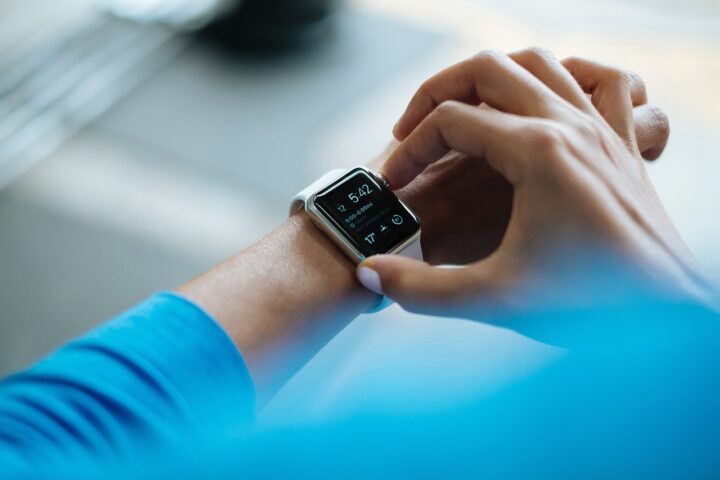Our life is on a fast track, and people have no time to get involved in physical activities. Do we need to blame the technology that made us a couch potato just like our Homer Simpson?

Many of the gadgets have made our lives convenient, effortless, and dependent on them.
Nowadays, to track our physical activities, we use smart wearables to push and motivate us to complete our physical activities which, we set as our daily goal to achieve.
According to Statista, the number of wearable devices will grow by over 1.1 billion by the end of 2020. Thanks to the technology transition, such as 4G to 5G, this will be a crucial factor. At the end of 2019, the number of wearables shipped worldwide stands around 336.5 million units, an increase of 89% when compared to 178 million units shipped during 2018.
What are smart wearables?
Smart wearables are the devices used as an accessory on the human body, which consists of sensors that collect real-time data about the human body and the surrounding environment.
The categorization of wearables given below based on the area of applications.
1) Fitness
2) Infotainment
3) Health care
Smart wearables such as the fitness band, monitor our day to day activity. Wearables monitor our sleep patterns and help in driving towards a healthy lifestyle. I do wear a fitness band and try to accomplish my daily goal of 10,000 steps. It’s not only used to track physical activity, but also there has been a breakthrough to monitor chronic illness conditions with the help of these smart wearables.
According to the WHO report, approximately 133 million Americans suffered from chronic diseases and projected that by 2020 three quarters of death worldwide will be due to chronic illness. Wearables can help to monitor and maintain patient’s health, and could reduce the burden on the health care infrastructure and also reduce the cost of patient rehabilitation.
According to Statista, around 62.9 million units of fitness band shipped across the world for the year 2019. Fitness band helps to monitor heart rate and sleep pattern. Apple watch series 5 consider to be a proactive health monitor can track heart rate and generate an ECG similar to a single lead Electrocardiogram. It can also monitor the menstrual cycle and noise level, which impacts our hearing.
Block diagram of ECG acquisition system
The figure below depicts the basic building block of an ECG acquisition system. Most of the system design and development, is based on the analog front end circuit, usually in case of a smartwatch or a fitness band worn around the user wrist.

The first stage of an ECG acquisition system consists of INA (Instrumentation amplifier) that receives differential signals captured through the wearables electrode. INA amplifies the low-level signals and passes this signal to the HPF block, allowing the higher frequencies to pass through the filter and goes towards the second stage of the amplifier. Finally, a low pass filter attenuates the higher frequencies, reduces signal bandwidth according to the ECG frequency range, and the signal from LPF goes to the analog to digital converter. Data converted from the ADC will be processed by the embedded microcontroller unit.
Why do we require an analog to digital converter?
Most of the signals around us are in the form of an analog signal, for example, temperature, pressure, and sound.
1) Analog signals are susceptible to noise.
2) Difficult to process the signal in the analog domain.
3) Difficult to store in the analog domain.
RLD amplifier typically added in the biological signal amplifiers to reduce the common-mode and enhance the front end system performance. Data will be sent out to the remote location through wireless MCU with RF transceiver. Some of the commonly available AFE circuits are from Texas Instruments and Analog Devices.

AFE4900 from TI a single-chip biosensing analog front end that can measure the synchronized ECG and the PPG data. The above block-diagram showcase the patient monitoring system the ECG/PPG sensors connected to the single-chip biosensing analog front end. Data from the ECG and PPG sensor is in the form of an analog signal. Data measured by the biosensing analog front end. The ADC codes to be stored in 128 sample first-in, first-out (FIFO) block, and read out through the SPI interface. The raw processed through wireless MCU to make inferences about the patient’s health. Some of the commercially available smartwatches from Apple and Samsung are capable of monitoring ECG and heart rate. In Apple watch series 5, the front end module used for the design is likely the Skywork front end ICs.

With rapid technology advancements, wearables can help to monitor the health and reduce the impact of chronic illness. Thus help in reducing the mortality rate and improving the patient’s prognosis.

Wonderful
I have been browsing on-line more than three hours these days, but I never found any fascinating article like yours. It抯 beautiful worth enough for me. In my view, if all webmasters and bloggers made excellent content as you probably did, the internet might be a lot more useful than ever before.
Thanks for the sensible critique. Me & my neighbor were just preparing to do a little research on this. We got a grab a book from our area library but I think I learned more from this post. I am very glad to see such wonderful info being shared freely out there.